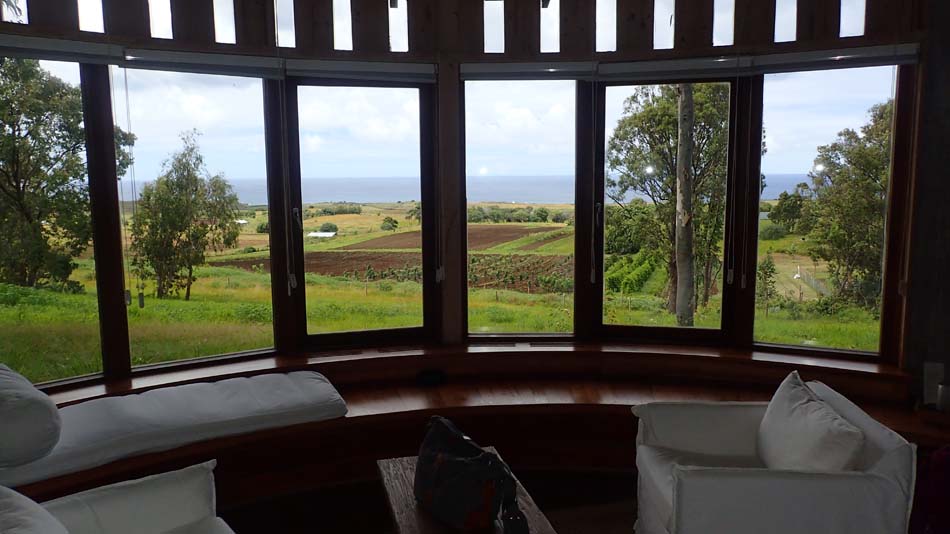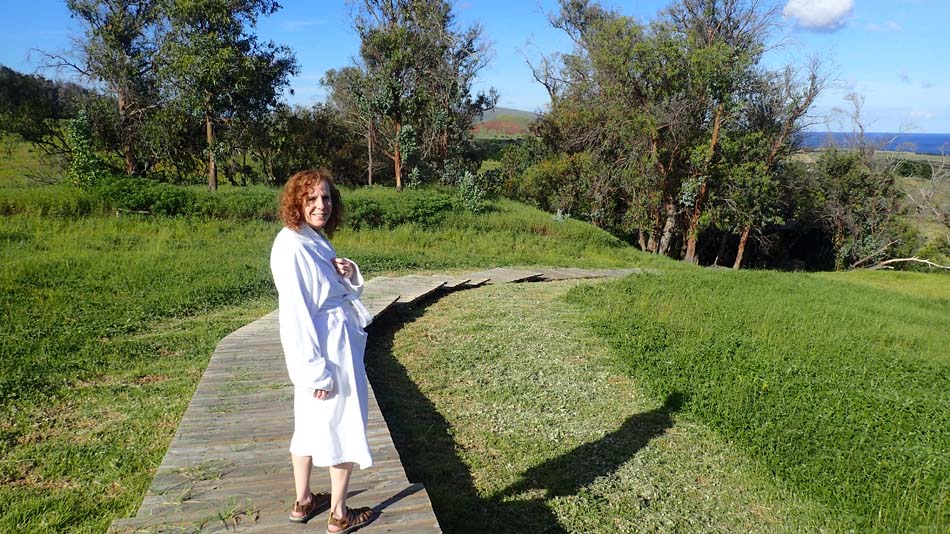I originally thought to try to condense the three days we spent on Rapa Nui (aka Easter Island) into one post. However, upon finishing this description of the first day, I realize there is too much to say and see. Some of the pictures may seem redundant, but there is so much to absorb as I try to convey the sense of place, spiritual and historical.
If you think it is too much or too little, please comment and I will try to adjust as I consider the next two days of our visit.
We arrived on this Magical, Mystical island on the 13th. This is a place where the people are connected to their land, their history and their culture in a very special way. Even though much of that history is shrouded in legend and an oral history with many breaks. The interpretations that coincide with the archaeological and historical record (from the early 18th century onward), however, are extraordinary in their consistency.
We landed at the small airport on the island, just after noon on the 13th. After getting our luggage, which did not take long at all (take note LGA), we were met by the driver and guide from our Hotel, the Explora. This is a beautiful all-inclusive hotel that arranges everything!

The Explora 
The Explora 
View from our room 
The lounge at the Explora 
Heading to the pool 
The infinity pool
Upon our arrival we were met by the manager who explained that each day there would be a meeting with the guides to discuss the next days excursions. There are five main sites that everyone must see on the island and they would arrange the morning and afternoon trips to insure we were able to visit each of these locals. After settling in our room and a brief lunch, we set off on our first excursions with our guide, Dale. Dale is a PHD in archaeology and has been studying the island for more than a decade. Very gregarious and knowledgeable about the island, its people and the artifacts we were going to see. Dale explained that the island is called Rapa Nui by the indigenous people who are also called Rapanui (one word). The island got the name Easter Island from a Dutch explorer who was passing by on Easter Day in 1722. He also noted that there are few roads on the island. The main roads were paved and not too bad. But many were dirt roads, and as Dale explained, its good that you have two kidneys.

Our first stop of the afternoon was at Ahu Akivi. Explanation: An Ahu is the platform on which the Moai, the monolithic statues that are iconic to the island, are placed. At this location there are seven Moai (pronounced Mow, like in mow the lawn, I, “Mow I”) looking toward the ocean. This is unique as most Moai are placed looking inward.

Dale standing in a “home” of a Rapanui 
Ahu Akivi 
Ahu Akivi
There are a couple of interpretations of the Moai. They represent ancestors looking after the people. Or they represent past chiefs with great power or Mana, again looking over the people. Could be they were watching to insure compliance with the rules, or that they were there to insure success of the harvests and the community at large.
The large stomachs indicate they were the chiefs, as they were well fed. Long fingernails is interpreted to indicate they oversee the work, but did little of their own. It is believed that long fingernails and long hair imbued one with Mana.
Our next stop was to Ana Te Pahu, a hike to a cave, formed by a lava tube. The island of Rapa Nui was formed by three volcanoes. The Moai, are carved from the rock formed by these volcanoes which also left behind many of these caves, used for storage, safety and for burial.

Dale and me. 
The cave at Ana Te Pahu
After hiking through the cave and back, our next stop was Tahai, by the sea. Here we could see a Moai standing alone, with the coral eyes looking toward the village. There was also an Ahu with several Moai nearby.

Cathy 
The Moai at Tahai 
Grave of William Mulloy – Archiologist 
Note the coral and obsidian used in the eyes.
Red “top knot” represents the hair of the ancestor.
We also got to experience one of the unusual aspects of life on Rapa Nui, where the horses and cows seem to roam free. This one is for Elyse!

Then is was back to the hotel where they had prepared a demonstration of traditional island song and dance. We also had a small portion of food cooked in the traditional manner; after heating rocks the chicken and potatoes were placed on the rocks and it was covered with banana leaves and earth to cook for several hours. The meat was tender and tasty.

Heating the rocks. 
Covering the food for cooking. 
Time to eat. 


Tomorrow we get up early for the sunrise on the eastern part of the island. Sunrise here is at 8:15, I still cannot wrap my head around the idea that here in the middle of the Pacific Ocean we are on US Central Time.



I’m thoroughly enjoying your adventure thru your pictures and wonderful commentary. I was not aware of the “time” there–how you are in the middle of the Pacific Ocean on US Central time??? It just too weird 🙂
Great photos too!
Agree. Love the details. Enjoy!
Thanks for the horse picture! Great shot!
Great report – not too long! Loving following along with your travels.